Baby Teeth Timeline: When Do Infants Cut Teeth and What to Expect
When do babies start teething. What order do baby teeth come in. How many teeth do babies have. Can teething be painful for infants. When do baby teeth fall out. What is the typical timeline for baby tooth development.
The Basics of Baby Teeth Development
The emergence of a baby’s first tooth is an exciting milestone for parents. While the exact timing can vary, most infants begin teething between 6 and 12 months of age. However, some babies may get their first tooth as early as 4 months or as late as 12 months. Understanding the typical timeline and order of tooth eruption can help parents know what to expect during this important phase of their child’s development.
How many teeth do babies have?
Babies develop a total of 20 primary teeth, also known as baby teeth or deciduous teeth. These are evenly divided between the upper and lower jaws, with 10 teeth in each.
- 10 teeth in the upper jaw
- 10 teeth in the lower jaw
These primary teeth will gradually fill your child’s mouth until around age 3, after which they will begin to fall out around age 6 to make way for permanent adult teeth.

The Order of Baby Teeth Eruption
While the exact order can vary from child to child, there is a general pattern that most babies follow when it comes to teething. Understanding this sequence can help parents anticipate which teeth are likely to appear next.
Which teeth typically appear first?
The first teeth to emerge are usually the lower central incisors – the two front teeth on the bottom. These are often followed by the upper central incisors, the two front teeth on top. After that, the pattern generally continues with teeth filling in pairs, one on each side of the upper or lower jaw.
- Lower central incisors (6-10 months)
- Upper central incisors (8-12 months)
- Upper lateral incisors (9-13 months)
- Lower lateral incisors (10-16 months)
- First molars (13-19 months)
- Canines (16-22 months)
- Second molars (23-33 months)
By the time a child reaches 2.5 to 3 years old, all 20 primary teeth have usually erupted.
Teething Symptoms and Discomfort
The teething process can be different for every baby. While some infants may experience little to no discomfort, others might show signs of irritability and discomfort as their teeth emerge.
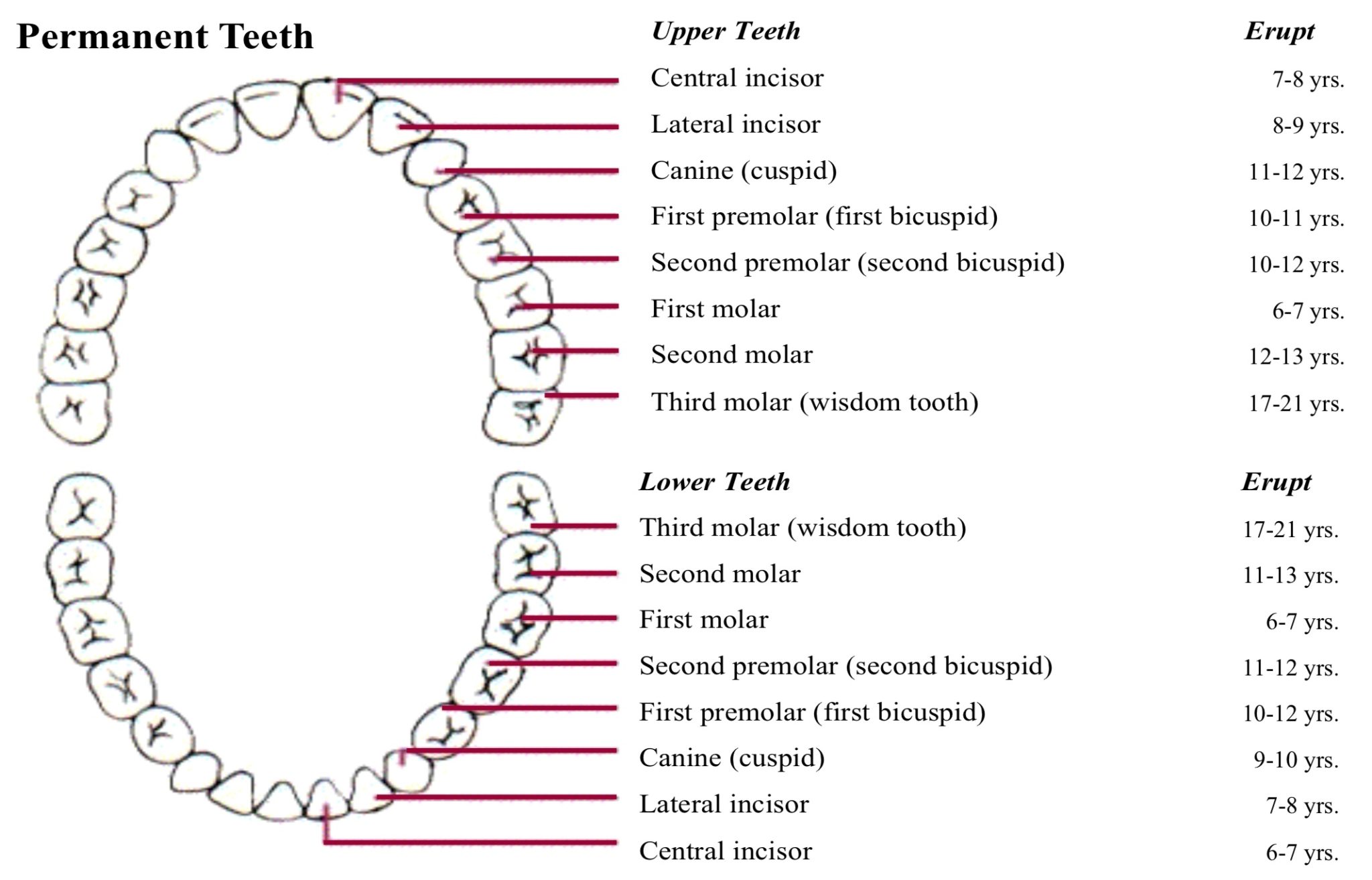
Is teething painful for babies?
Teething can cause mild discomfort for some babies. The gums around the erupting teeth may become swollen and tender, leading to irritability, crying, and occasionally a low-grade fever. However, it’s important to note that not all babies experience pain during teething.
Common teething symptoms may include:
- Increased drooling
- Chewing on objects
- Irritability or fussiness
- Slight increase in body temperature
- Difficulty sleeping
- Decreased appetite
If your baby seems particularly uncomfortable or you’re concerned about their symptoms, it’s always best to consult with your pediatrician or dentist for personalized advice.
Soothing Teething Discomfort
There are several ways parents can help alleviate their baby’s teething discomfort. While not all methods work for every child, experimenting with different techniques can help you find what works best for your little one.
How can I soothe my teething baby?
Consider these strategies to help ease your baby’s teething pain:

- Gently massage your baby’s gums with a clean finger
- Offer a cold teething ring or washcloth for your baby to chew on
- Provide safe, sturdy teething toys
- Use a clean, damp washcloth to wipe away excess drool
- For babies over 6 months, offer cold foods like chilled applesauce or yogurt
- Ask your pediatrician about over-the-counter pain relief options if necessary
Remember to always supervise your baby when using teething toys or eating foods to prevent choking hazards.
When Baby Teeth Fall Out
Just as exciting as the arrival of baby teeth is the milestone of losing them. Understanding when this process typically begins can help parents prepare their children for this new phase.
At what age do baby teeth start falling out?
The process of losing primary teeth, also known as exfoliation, typically begins around age 6 or 7. However, just like the eruption of baby teeth, the timing can vary from child to child. Generally, teeth fall out in the same order they came in, with the lower central incisors being the first to go.

Here’s a general timeline for when baby teeth typically fall out:
- Central incisors: 6-7 years
- Lateral incisors: 7-8 years
- First molars: 9-11 years
- Canines: 10-12 years
- Second molars: 10-12 years
It’s important to remember that this is just a general guide, and your child’s teeth may fall out earlier or later than these ranges.
Caring for Baby Teeth
Proper dental care should begin even before your baby’s first tooth appears. Establishing good oral hygiene habits early can set the foundation for a lifetime of healthy teeth and gums.
How should I care for my baby’s teeth?
Here are some tips for maintaining your baby’s dental health:
- Clean your baby’s gums with a soft, damp cloth after feedings
- Once teeth appear, brush them twice daily with a soft-bristled toothbrush
- Use a rice-sized amount of fluoride toothpaste for children under 3
- Avoid putting your baby to bed with a bottle to prevent tooth decay
- Limit sugary foods and drinks
- Schedule your baby’s first dental visit by their first birthday or within 6 months of their first tooth erupting
Regular dental check-ups and proper home care can help ensure your child’s primary teeth remain healthy until they’re ready to be replaced by permanent teeth.

The Importance of Baby Teeth
While it might be tempting to dismiss the importance of baby teeth since they eventually fall out, these primary teeth play crucial roles in your child’s development and overall health.
Why are baby teeth important?
Primary teeth serve several important functions:
- They help children chew food properly, supporting good nutrition
- They aid in speech development
- They hold space in the jaw for permanent teeth
- They contribute to a healthy smile, boosting self-confidence
- They serve as guides for the permanent teeth, helping them come in correctly
Maintaining healthy baby teeth is crucial for your child’s overall health and development. Neglecting these primary teeth can lead to dental problems that may affect the permanent teeth and your child’s long-term oral health.
When to Consult a Dentist
While teething is a normal part of development, there are times when it’s advisable to seek professional dental advice. Being aware of potential warning signs can help ensure your child’s dental health stays on track.

When should I take my baby to the dentist?
The American Academy of Pediatric Dentistry recommends that children should have their first dental visit by their first birthday or within six months after their first tooth appears. However, there are certain situations where you might need to consult a dentist sooner:
- If you notice signs of tooth decay, such as white or brown spots on the teeth
- If your child experiences dental trauma, such as a chipped or knocked-out tooth
- If your child complains of tooth pain that isn’t relieved by normal teething remedies
- If you notice any unusual growths or abnormalities in your child’s mouth
- If your child’s teeth aren’t coming in by 12 months of age
Regular dental check-ups are crucial for maintaining your child’s oral health and catching any potential issues early. Don’t hesitate to reach out to a pediatric dentist if you have any concerns about your child’s teeth or oral development.
Baby Teeth Chart: A Full Teething Timeline
As your baby grows, you’ll start looking for those first tiny teeth to poke through the gums — an exciting milestone. Although the teething period can be hard for some babies, the upside is that you have lots of toothy grins to look forward to.
Discover when your baby’s first tooth is likely to erupt, as well as what in what order the rest of your baby’s teeth will come in, and at what age. Our baby teeth chart will make it easier to get a handle on which tooth is which!
Baby Teeth Chart
A baby teeth chart shows you when each of your little one’s first set of teeth — known as primary teeth, baby teeth, or deciduous teeth — is likely to come in and then fall out.
Although the exact age when a tooth erupts or falls out will vary from child to child, the baby teeth chart below is a rough guide to when babies typically get their teeth.
In What Order Do Baby Teeth Appear?
Teething usually begins around the ages of 6 to 12 months, although for some babies a tooth can appear as early as 4 months or later than 12 months.
Most of the time, the two front teeth — the central incisors — on either the top or bottom row make their appearance first. Often these are then followed by the opposite front teeth, then the first molars, followed by the canines.
Teeth usually fill in, often in pairs, with one on each side of the upper or lower jaw, until all teeth have arrived. Usually by the time your child is 2 1/2 to 3 years old, all of the primary teeth will have erupted.
The table below shows an approximate age range for when each tooth will come in as an alternative to the baby teeth chart.
How Many Teeth Do Babies and Kids Have?
In total, 20 baby teeth come through. There are 10 on the upper jaw (top teeth) and 10 on the lower jaw (bottom teeth).
Your little one’s mouth will gradually become filled with these teeth up until the age of 3. Then, these primary teeth will begin falling out around the age of 6 to make way for your child’s adult teeth.
Can Teething Be Painful for Babies or Toddlers?
For some babies, teething is painless, but for others it may occasionally cause mild irritability, crying, and even a low-grade temperature.
Much of the discomfort comes from the gums around the new teeth as they erupt, which can become swollen and tender.
If your baby or toddler is showing signs of discomfort and you think it may be due to teething, contact your child’s healthcare provider or dentist for personalized advice. You can also read more on how to soothe a teething baby here or consider a teething toy as a way to help soothe your little one.
At What Age Do Baby Teeth Fall Out?
The first primary teeth begin to fall out when a child is around 6 or 7 years old. The table below offers an approximate age rage for when each tooth typically falls out. Keep in mind, this table shows an average range and it may happen a little differently for your child.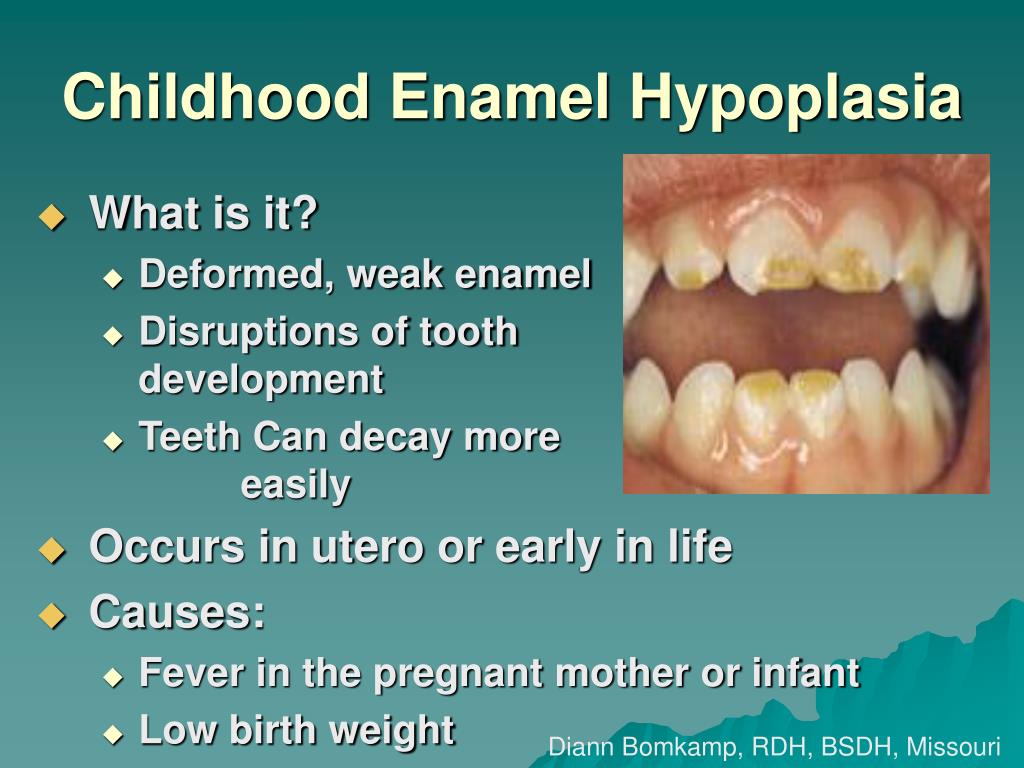
The Bottom Line
It’s exciting seeing that first baby tooth, and a baby teeth chart can provide a rough idea of when the rest of your baby’s teeth will come in. Just remember that every child’s development is different, so your little one’s teeth may follow a slightly different timeline.
At this time, you might also be interested in reading up on how to care for your baby’s teeth and when your baby’s first dentist visit should be.
Baby teeth chart: What order do teeth come in?
- Community
- Getting Pregnant
- Pregnancy
- Baby Names
- Baby
- Toddler
- Child
- Health
- Family
- Courses
- Registry Builder
- Baby Products
Advertisement
Teething chart: Which baby teeth come in first?
As you can see from the teething chart above and the illustration below, it’s usually the two front teeth on the bottom (the lower central incisors) that come in first.
Even before your baby was born, tooth buds were developing under their gums. Babies typically sprout a tooth between 6 and 12 months, but it’s perfectly normal for your baby’s first tooth to show up at 3 months – or after their first birthday. (Some babies are even born with teeth!) It’s also fine if your child’s teeth come in or fall out in a different order than what’s outlined here.
Lower central incisors: 6 to 10 months
Teething begins. Your baby’s gums may be swollen and red where the teeth are coming through, and your little one may have other teething symptoms. The two middle teeth on the bottom (lower central incisors) are usually the first to erupt, often at about the same time.
Fast fact: Girls usually get their teeth before boys do.
Upper central incisors: 8 to 12 months
Upper middle teeth (the upper central incisors) emerge.
Fast fact: Baby teeth, or primary teeth, have wavy edges that smooth out with use.
Upper lateral incisors: 9 to 13 months
Top teeth right next to the middle teeth (lateral incisors) appear, giving your baby a row of what look like four little Tic Tacs.
Fast fact: Teeth usually emerge in pairs – one on the right and one on the left.
Lower lateral incisors: 10 to 16 months
The lateral incisors appear on the bottom. Now your baby can flash quite the toothy smile.
Fast fact: Baby teeth hold space for permanent teeth developing under the gums.
Upper first molars: 13 to 19 months
Your child’s first molars – the wider teeth toward the back of the mouth – erupt on the top. They won’t have much to do until the ones on the bottom show up.
Fast fact: Baby teeth are whiter and smaller than permanent teeth.
Lower first molars: 14 to 18 months
The companion molars on the bottom emerge. Now your toddler can really do some serious chewing.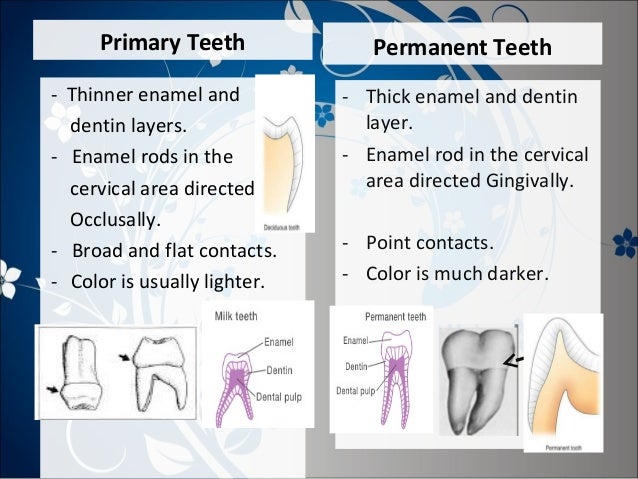
Fast fact: Sometimes the first molars on the top and bottom will erupt on one side before they erupt on the other side.
Upper canines: 16 to 22 months
Also called a cuspid, the upper canine fills the gap between the incisors and first molars.
Fast fact: These teeth are sometimes called dog teeth.
Lower canines: 17 to 23 months
The lower cuspids appear.
Lower second molars: 23 to 31 months
The second molars, or very back teeth, emerge on the bottom.
Upper second molars: 25 to 33 months
The final teeth – the rear molars on the top – work their way in.
By age 3, most kids have a full set of 20 baby teeth and can give you a brilliant grin.
Growth of jaw and facial bones: Ages 4 to 6
The bones in your child’s face and jaw grow and develop, creating space between the baby teeth for permanent teeth to come in.
Tooth loss: Ages 6 to 12
Photo credit: Thinkstock
Your child starts losing teeth. During these years, their grin features both baby teeth and permanent teeth as one type starts to replace the other.
During these years, their grin features both baby teeth and permanent teeth as one type starts to replace the other.
Your child’s teeth can fall out in any order, but baby teeth are often lost in the same order they arrived. If your child’s baby teeth came in later, they may lose them later too.
The middle teeth are usually the first to go (at 6 to 7 years), followed by the ones on either side (at 7 to 8 years). The molars can be lost any time after that but will likely fall out between 9 and 12 years. The bottom canines will probably fall out between 9 and 12 years, and the top canines will come out between 10 and 12 years.
A full set: Age 13
Photo credit: iStock.com / PeopleImages
Your child will probably have all 28 permanent adult teeth at around age 13. (Their four wisdom teeth will come in when they’re 17 to 21 years old.)
If you have any concerns about your child’s teeth, talk to your child’s dentist.
Learn more:
Taking care of your baby’s gums and teeth
How to handle tooth accidents
Was this article helpful?
Yes
No
Karisa Ding
Karisa Ding is a freelance health writer and editor with expertise in preconception, pregnancy, and parenting content. A mother of two, Ding finds great joy in supporting new and expectant parents by providing information they need for the life-changing journey ahead. Ding lives in San Francisco with her family.
A mother of two, Ding finds great joy in supporting new and expectant parents by providing information they need for the life-changing journey ahead. Ding lives in San Francisco with her family.
Advertisement | page continues below
Advertisement
Teething: how to help the baby?
- Home
- Articles
- About dentistry
- Teething: how to help the baby?
Teething is a natural process for every small child, which, however, turns into a painful condition for him, and even more stress for his parents. It is hard to watch when a small child is in pain. During this period, the baby develops symptoms similar to a severe cold: ear pain, fever, diarrhea, general body aches and a runny nose. Plus, the baby cries and acts up more than usual. Sometimes such symptoms are absent or pass almost imperceptibly – after all, much here depends on the nature of the little man. All children are different – this is a well-known truth, therefore their development (and teething refers specifically to growth and development) is completely different. In any case, parents should not be afraid, because their baby is growing, and our article will tell how to help him during this period.
In any case, parents should not be afraid, because their baby is growing, and our article will tell how to help him during this period.
When do the first milk teeth appear?
It is generally accepted that the first milk teeth appear in a baby at six months. In fact, they are formed in the baby’s mouth even when he is in the mother’s stomach. In the sixth or eighth week of pregnancy, twenty teeth are born, which are called rudiments. When a baby is six months old, milk teeth appear, deep under which, by that time, permanent teeth are at the embryonic stage. There are cases when a child is born with teeth, but they are very rare. It happens that the baby’s dental system develops too early, and already at three months small white spots in the gums are visible in the mouth. Milk teeth may appear not in six months, but in a year. Although such a development of the situation is considered a deviation from the norm, as a rule, this is not associated with pathologies, but with various characteristics of the child’s body and heredity.
With rare exceptions, children’s dental system develops in this order:
- Six months or about a year – four incisors appear in the mouth: two upper and two lower;
- One year – deuces appear, – one more incisors – four pieces;
- One and a half years – the appearance of molars, upper and lower;
- Two years – teething;
- Three years – the appearance of a row of molars.
Signs of teething in a child. How to define them?
Those signs that parents are waiting for – fever and pain, do not appear immediately. But to recognize that the baby begins the process of teething is still not difficult. If you notice that the child began to salivate, and any thing that was in his hands, he strives to taste and chew well with his gums, then the baby is teething. This sign never fails. During this period, it is especially important to monitor the cleanliness of toys and other hygiene at home.
The second sign of teething is swelling and redness of the gums. In order to detect this, you just need to watch the baby’s mouth, paying attention to the tops of the gums. If you saw white spots there, then it’s time to buy a special device at the pharmacy – a teether.
The third symptom is a bad mood that the child experiences from periodic pain. The kid is not interested in playing, he often cries and is naughty, and in connection with this, his night’s sleep may also deteriorate. This period lasts only two days, but parents should be patient and show their love to the child more often than usual.
The fourth most unpleasant sign of teething is various pains and temperature. It is important here not to confuse these pains with cold symptoms or indigestion. The baby may begin to have a runny nose, diarrhea, fever, ear pain and a general weakening of the immune system, in addition, the gums may ache and itch a lot. During this period, the child’s vulnerability to infections increases.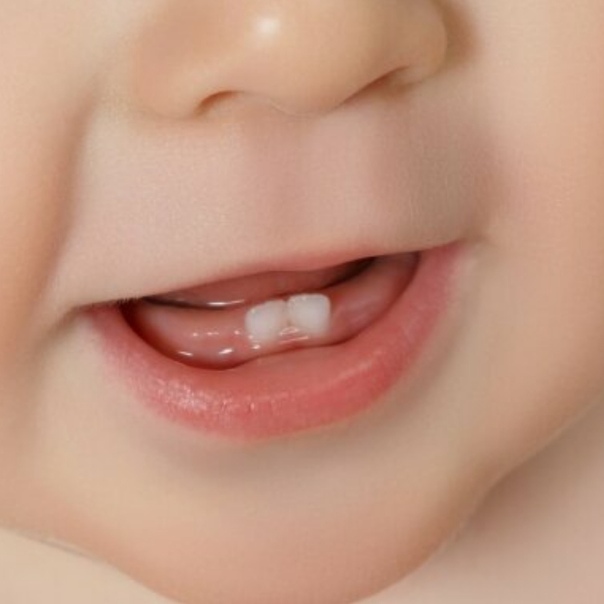 This state can last two or three days, and it ends as quickly as it appeared.
This state can last two or three days, and it ends as quickly as it appeared.
How can a child be helped and relieved?
First aid is the care, affection and kindness that parents are obliged to surround their child with. After all, in an atmosphere of love and tenderness, even getting sick is not so scary, and small children feel this truth very well. To protect the baby from infections, it is necessary to observe hygiene in the house, it is especially important to ventilate the room well while the baby is on a walk or in another room. If any infection has entered the room, then airing will reduce the risk of its spread to a minimum. Don’t forget gum toys. The fact is that during this period the baby experiences considerable itching in the gums, and the teether is made of a pleasant, soft material. They can not only scratch the gums, but also cool them, because these devices are filled with cold water. In case you notice that in addition to the teether, additional help is needed for the gums, you can purchase a special tooth gel with the appropriate age mark: from 0 or 6 months.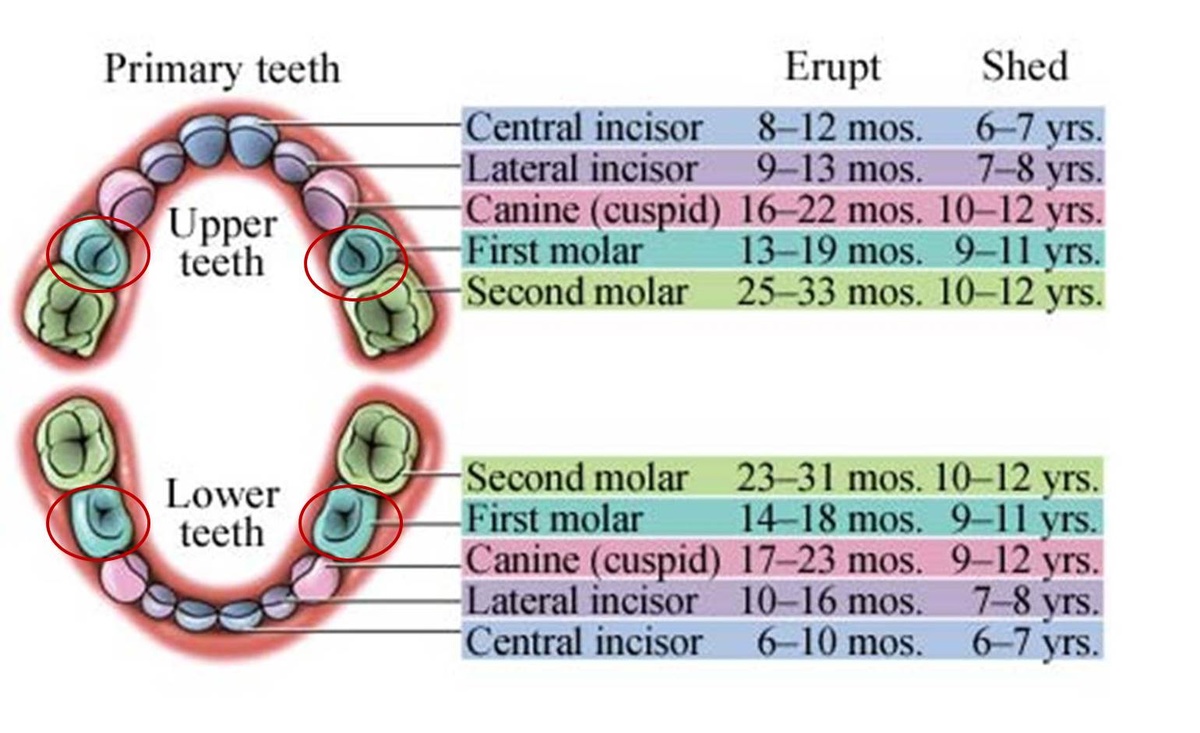 This drug relieves itching, pain and swelling of the gums. Also, be careful with the use of antipyretics. The fact is that temperature is a friend of a person, even the smallest. If the temperature rises to 38 or even 39This means that the body fights infection well. Therefore, by lowering the temperature, you deprive the child’s body of the natural ability to fight infection. In addition, a sharp drop in temperature is very harmful to the body. In folk medicine, there are good ways that effectively, and most importantly, safely reduce the temperature: these are wraps with a damp cloth. Soak a cotton cloth or gauze in cool water and wrap it around the baby’s legs. This method is not only antipyretic, but also relieves other unpleasant symptoms: headache and body aches.
This drug relieves itching, pain and swelling of the gums. Also, be careful with the use of antipyretics. The fact is that temperature is a friend of a person, even the smallest. If the temperature rises to 38 or even 39This means that the body fights infection well. Therefore, by lowering the temperature, you deprive the child’s body of the natural ability to fight infection. In addition, a sharp drop in temperature is very harmful to the body. In folk medicine, there are good ways that effectively, and most importantly, safely reduce the temperature: these are wraps with a damp cloth. Soak a cotton cloth or gauze in cool water and wrap it around the baby’s legs. This method is not only antipyretic, but also relieves other unpleasant symptoms: headache and body aches.
Also, do not rush to give your child medicines if the baby has a little stomachache or a runny nose. Any medical medicine is produced chemically, which is not so good for the health of the child. In addition, teething is not a dangerous process, so such strict measures should not be applied. But it is still necessary to alleviate the condition of the child, for which proven folk methods are perfect – these are decoctions of herbs. Pain in the tummy very well and quickly soothes a weak infusion of peppermint, which, moreover, will help the baby calm down and fall asleep faster. The same herb also helps with vomiting. In addition, peppermint is an antispasmodic, which means it copes well with headaches. In addition to mint, you can prepare a light decoction of chamomile or oregano. Natural pomace of eucalyptus or Kalanchoe helps with a runny nose, but they are far from always available. It is worth preparing for this in advance by asking the local pediatrician for a prescription for preparing an ointment for a cold in a pharmacy. These remedies are made from herbs. They are natural, safe and effective.
But it is still necessary to alleviate the condition of the child, for which proven folk methods are perfect – these are decoctions of herbs. Pain in the tummy very well and quickly soothes a weak infusion of peppermint, which, moreover, will help the baby calm down and fall asleep faster. The same herb also helps with vomiting. In addition, peppermint is an antispasmodic, which means it copes well with headaches. In addition to mint, you can prepare a light decoction of chamomile or oregano. Natural pomace of eucalyptus or Kalanchoe helps with a runny nose, but they are far from always available. It is worth preparing for this in advance by asking the local pediatrician for a prescription for preparing an ointment for a cold in a pharmacy. These remedies are made from herbs. They are natural, safe and effective.
In order to survive the period of teething as painlessly as possible, try to prepare all the means in advance, while not forgetting to consult a pediatrician.
How to properly care for children’s teeth?
- Your baby’s oral care should start from the first milk teeth.
 The best toothbrush for a child under one year old is mom’s or dad’s finger, which is wrapped in a soft cloth, mostly gauze. During such brushing, it is very important not to frighten or upset the child, trying to turn this activity into an interesting game.
The best toothbrush for a child under one year old is mom’s or dad’s finger, which is wrapped in a soft cloth, mostly gauze. During such brushing, it is very important not to frighten or upset the child, trying to turn this activity into an interesting game. - Children under the age of three who already have molars should buy a soft silicone brush and fluoride-free toothpaste. To make your baby like pasta, choose products with a pleasant, sweet taste. Most importantly, make sure that the child does not swallow the paste. It is very important not to scare the child away from brushing their teeth, but on the contrary, to show that this is an interesting and enjoyable activity. It is good if the parents themselves set an example for the baby, performing the procedure of brushing their teeth together.
- Try to get your child to brush their own teeth by the age of three. At the same time, you must control this process, check the result, and, if necessary, gently show the child where he made a mistake this time.

Children’s tooth gel in our boutique
Gel Sweet Banana
Gel berry cherry
Gel Neutral
Gel Pink Pear
Teach your child to brush their teeth correctly from an early age, that is, after eating. After all, this is logical, because after breakfast, the teeth will see the brush and paste only in the evening. Another important rule for a child’s dental hygiene is the restriction of eating sweets such as sweets, cakes, lollipops, cakes and sweet water. To maintain healthy teeth for as long as possible, ideally, it would be worthwhile to completely protect the child from this kind of sweets. But we all understand that it is not easy. Therefore, an important and responsible matter of parents should be to control the amount of sweets, because in addition to the risk of caries, sweets can cause other problems in the body. Taking care of your baby’s teeth will help him avoid many problems in the future, such as tooth decay, toothache, malocclusion and disproportionate growth of facial bones. Thanks to the right actions and the responsible approach of parents, children will keep a beautiful smile for life.
Thanks to the right actions and the responsible approach of parents, children will keep a beautiful smile for life.
Make an appointment with a doctor right now
We hope this article has helped you prepare for the big event of teething and put our tips into practice. The specialists of our center are always ready to conduct a preventive examination of the condition of your child’s teeth and, if necessary, correct the formation of the dentoalveolar system.
Sign up
- About dentistry
How and what to feed a baby when teeth are being cut
— Anastasia Anatolyevna, when babies start teething, how long does teething last?
— Babies can show off their first central incisors at about six months of age. However, the first symptoms of teething in infants may appear as early as a couple of months before the tooth looks out. And it is desirable to see the beginning of the process in time to help the baby survive the pain. In most babies, discomfort symptoms are detected three to four days before teething and usually disappear on the fourth day after the tooth comes out.
And it is desirable to see the beginning of the process in time to help the baby survive the pain. In most babies, discomfort symptoms are detected three to four days before teething and usually disappear on the fourth day after the tooth comes out.
Clear signs of teething in an infant:
- increased salivation, rash on face and chest from constant wetting;
- swelling of the gums, their increased sensitivity to sucking;
- peanut is irritable and whiny, naughty, does not perceive the breast / bottle;
- the baby gnaws, bites objects, trying to relieve soreness in the mouth;
- the baby’s sleep is disturbed, night wakefulness appears.
– Toothache is often mistaken for a cold or an allergy. How to distinguish one state from another?
— Teeth growth is a physiological stage, and, as a rule, it does not have negative consequences for the child’s health, despite frequent crying, fever, and excessive anxiety. Children’s ailments can be differentiated based on knowledge of their characteristic features.
Children’s ailments can be differentiated based on knowledge of their characteristic features.
Table. How to understand that a baby is teething
— Parents often worry that their children are not eating enough. Are baby’s first teeth and weight gain related?
– Poor appetite is an alarming symptom that occurs against the background of teeth moving and pressure on aching gums during feeding. The baby does not attach well to the breast, pushes out the nipple and receives less nutrition, which leads to a suspension in weight gain. It is better to just temporarily switch to a free diet, but do not force feed the baby.
An infant’s poor appetite may be accompanied by the following behavioral changes:
- total or partial rejection of the breast/bottle;
- constant whims while feeding with writhing of the body;
- increased desire to take something in the mouth, followed by refusal to eat due to increased discomfort and itching in the gums;
- loss of interest in solid foods, especially in children on a mixed diet.

— And if the child often refuses to suckle the breast or pacifier?
— Parents need to be patient. The inflammatory process in the mouth – which means sleepless nights and a moody mood – reduces appetite. Any touch to the gums is accompanied by discomfort, so the baby does not want to suck. In such a situation, force-feeding is useless. But even if the child misses two or three feedings per day, nothing bad will happen, everything will get better soon. When he is very hungry, he will still take a breast or a bottle and be sure to eat.
— Restless baby is waiting for support — how to soothe itching, inflammation of the gums?
— Teeth do not appear before three months, and sometimes the “tooth festival” in the family is celebrated closer to the year. The task of parents is not to miss the moment when the tooth comes out in order to facilitate the process.
Teether Dummy
— Given with the appearance of the first incisor for scratching the outer side of the jaw. Itching subsides with the growth of teeth at the edges of the mouth. It is better to look for a wide pacifier (it is so convenient to get hard-to-reach places in the oral cavity) with a narrow limiter handle (does not interfere with the grip and does not allow the nipple to be swallowed too deeply).
Itching subsides with the growth of teeth at the edges of the mouth. It is better to look for a wide pacifier (it is so convenient to get hard-to-reach places in the oral cavity) with a narrow limiter handle (does not interfere with the grip and does not allow the nipple to be swallowed too deeply).
Non-spill cup
— Teething is accompanied by strong salivation, therefore, in order to normalize the water balance, plenty of drinking is often given from a convenient drinking cup. Its spout is made of rubber, and the valve does not allow liquid to flow. In addition, convenient holders do not allow the bottle to slip out of the baby’s hands. Children are delighted with such a “toy” and drink from a beautiful bottle with great zeal.
Pain reliever, gum gel
– Your doctor will tell you the best solution. A number of drugs to relieve inflammation and soothe the gums include lidocaine. But for them there is no clear dosage, and the baby can swallow the medicine. Therefore, when treating gums, when a tooth is cut, lidocaine can lead to intoxication of a small organism and cause serious undesirable consequences.
Therefore, when treating gums, when a tooth is cut, lidocaine can lead to intoxication of a small organism and cause serious undesirable consequences.
Rules for the use of gels for pain in teething syndrome:
- at the first anxiety of the child, first a teether, drinking bowl are given, a circular massage of the gums is done from the wings of the nose to the corners of the mouth;
- remedy is used only for severe discomfort;
- is applied in a thin layer up to 3-4 times a day with strict observance of the instructions;
- manipulation is performed with a clean finger, accompanied by a circular massage;
- it is preferable to lubricate the gum after feeding and at night;
- Never let your baby chew on a tube of gel.
– Anastasia Anatolyevna, what to feed and how to feed a child when teeth are being cut – is it necessary to follow the schedule, give the baby water, warm food? And what is better to give the child: infant formula / puree soup / vegetable puree? Should I keep breastfeeding?
— When teething, it is important to get away from a well-planned feeding schedule for a while. It is best to offer your baby breast or formula milk on demand. Everything will soon return to normal and return to the order that developed during life without teeth.
It is best to offer your baby breast or formula milk on demand. Everything will soon return to normal and return to the order that developed during life without teeth.
It is preferable not to force the baby to eat solid foods. It is better to cook liquid, mashed, light meals, and also not to introduce new complementary foods, not to give stale bread, cookies, in order to eliminate the risk of choking on crumbs. The temperature of the food should correspond to the temperature of the child’s body, so as not to worsen the condition of the baby and he has not lost his desire to eat. With hyperthermia and salivation, it is advisable to give the baby water to drink.
— Do breast-fed and formula-fed babies equally tolerate toothache?
– Breastfed babies have been found to be more tolerant of teething. Mother’s breast is not only a source of complete and healthy food, but also a bioregulator of the emotional state, a way to calm down. Mothers whose babies literally “hang on their chests” observe that periods of prolonged feeding coincide with the appearance of dental tubercles.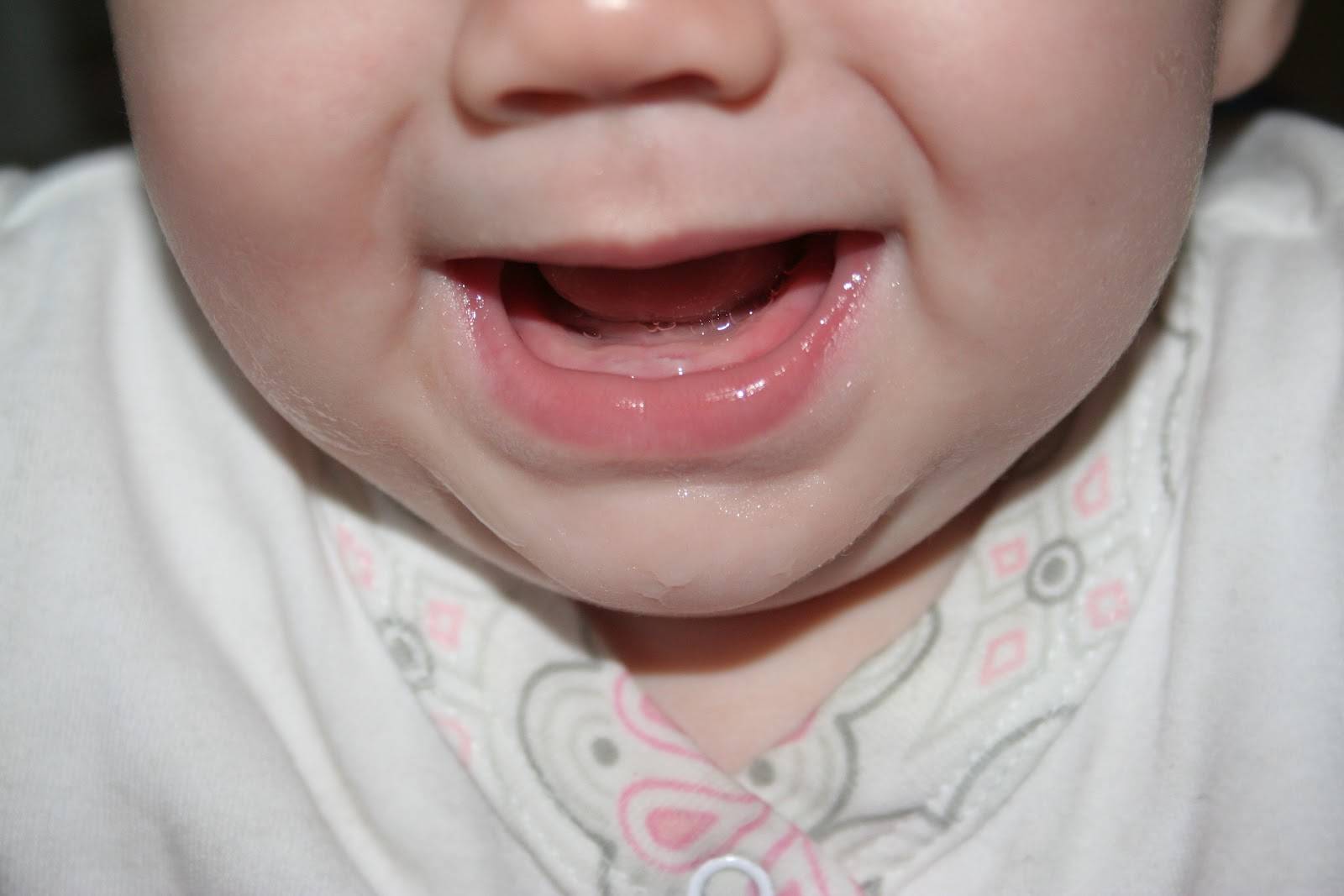
You need to show increased attention to a bottle-fed baby – hold him on the arms more often, fall asleep with him, spend sleepless nights nearby – fortunately, the tooth completely crawls out in just 3-4 days (in the worst case, in a week).
– Does infant formula affect the baby in any way when teething?
— The best food for a newborn is, of course, breast milk. But there is no tragedy in transferring a child to artificial or mixed feeding, if it is really necessary. This decision is made by the mother together with the pediatrician.
Fortunately, there are now alternatives to breast milk, among them MAMAKO ® Premium infant formulas. They have excellent composition, pleasant taste. One of their main advantages is the basis of goat’s milk, which is closer in composition to breast milk than cow’s. Features of the protein component of goat mixtures contribute to their easier digestion.
The eruption of the first teeth through the soft tender gums can cause the child’s whims during feeding.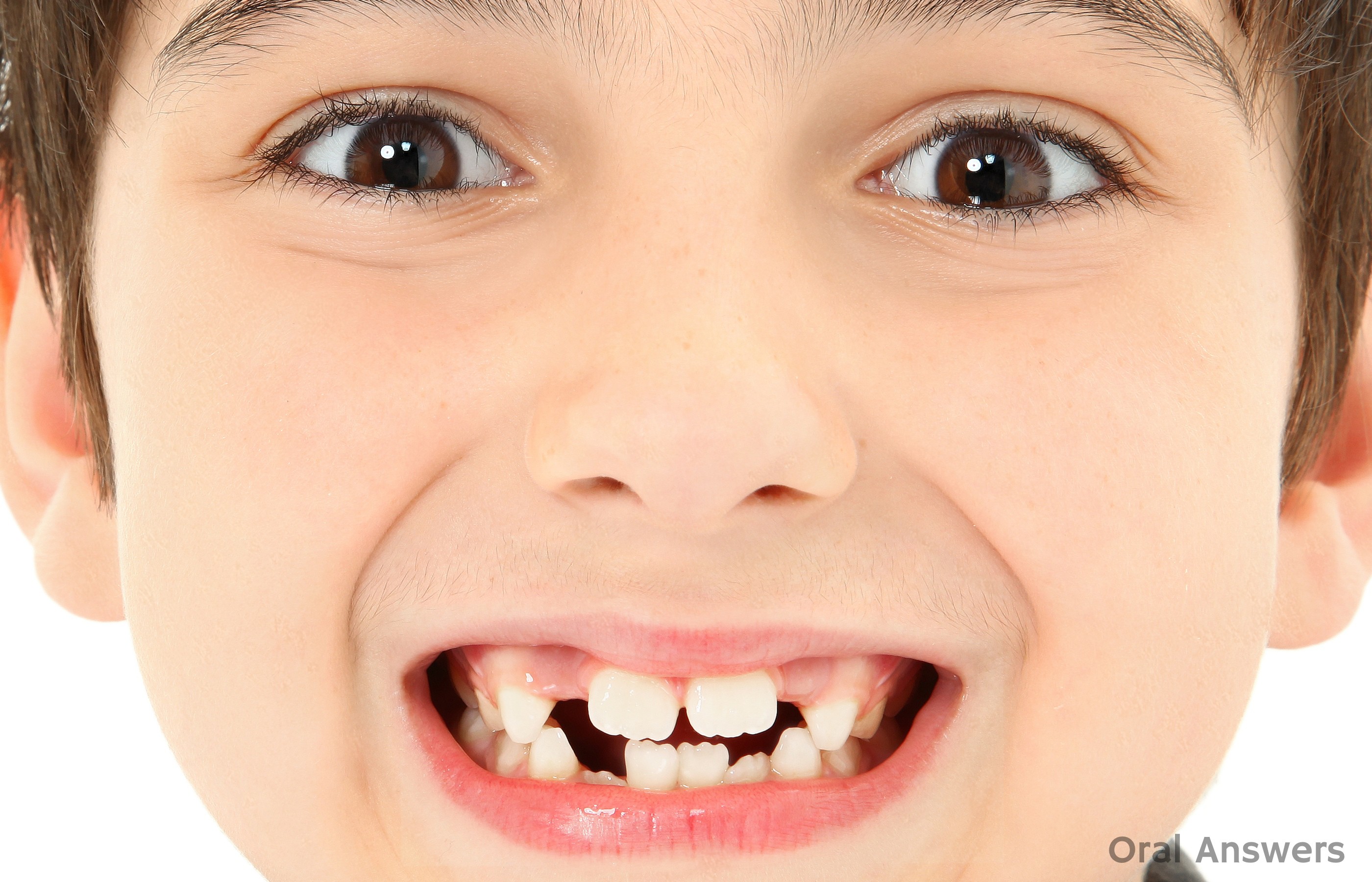

 The best toothbrush for a child under one year old is mom’s or dad’s finger, which is wrapped in a soft cloth, mostly gauze. During such brushing, it is very important not to frighten or upset the child, trying to turn this activity into an interesting game.
The best toothbrush for a child under one year old is mom’s or dad’s finger, which is wrapped in a soft cloth, mostly gauze. During such brushing, it is very important not to frighten or upset the child, trying to turn this activity into an interesting game.
